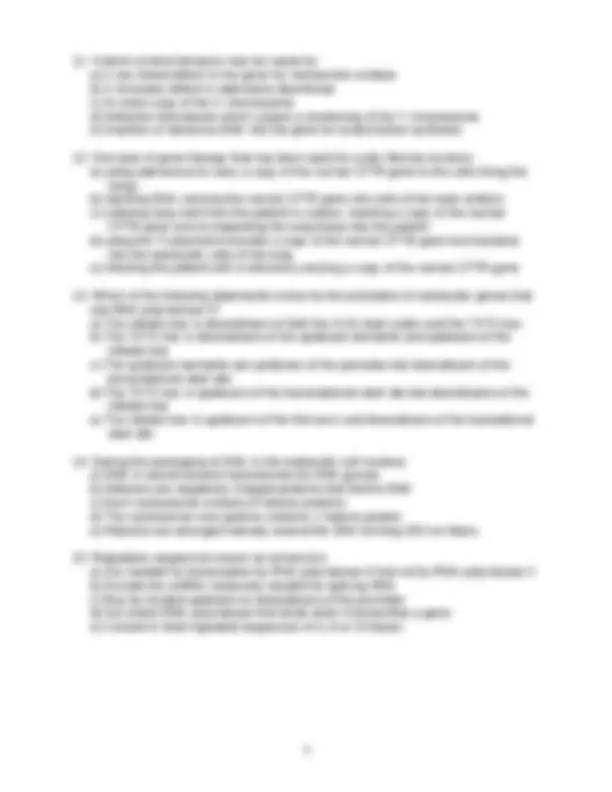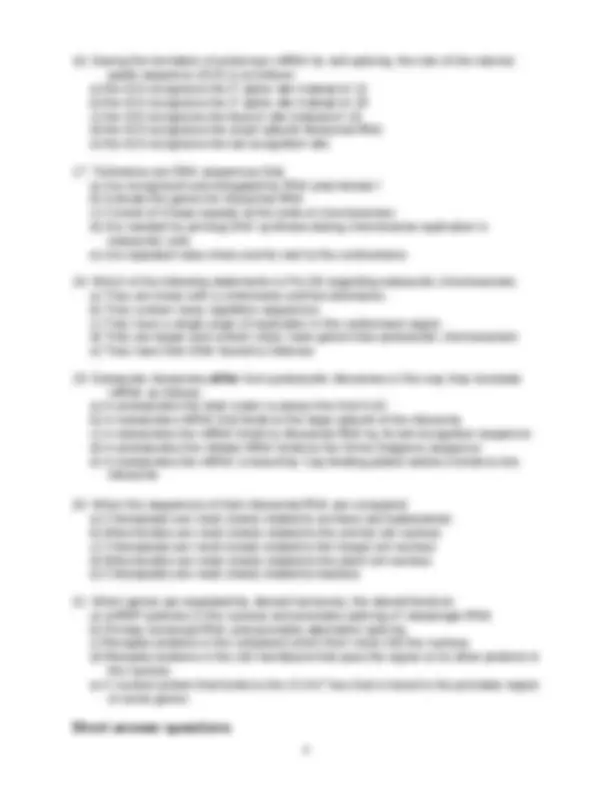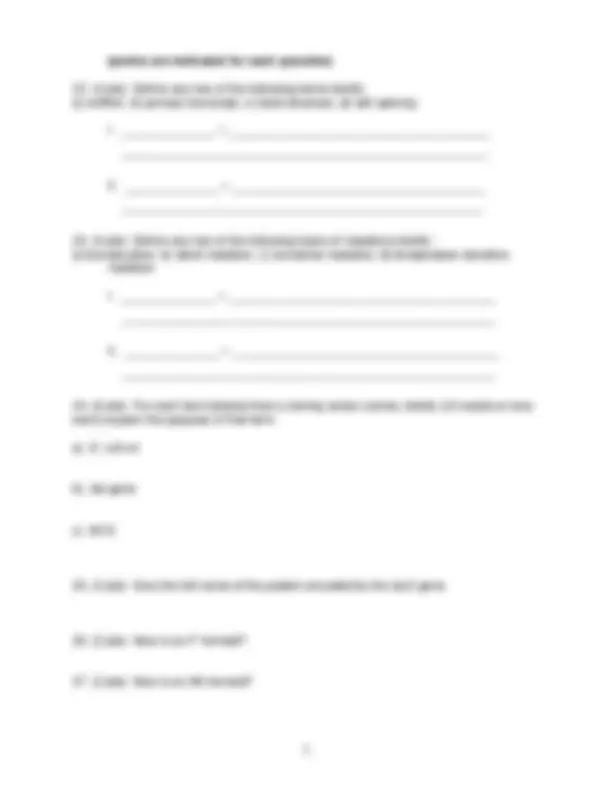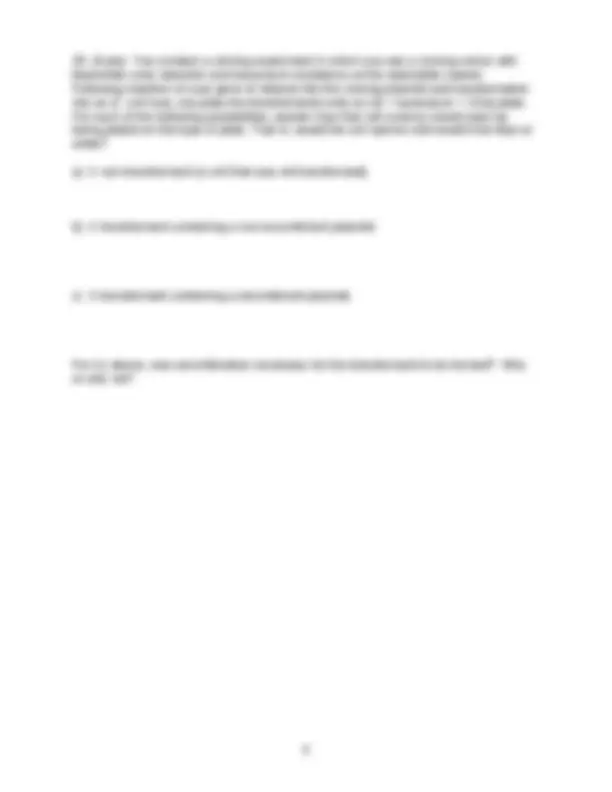






Study with the several resources on Docsity

Earn points by helping other students or get them with a premium plan


Prepare for your exams
Study with the several resources on Docsity

Earn points to download
Earn points by helping other students or get them with a premium plan
Community
Ask the community for help and clear up your study doubts
Discover the best universities in your country according to Docsity users
Free resources
Download our free guides on studying techniques, anxiety management strategies, and thesis advice from Docsity tutors
Material Type: Exam; Class: Molecular Biology; Subject: Microbiology; University: Southern Illinois University Carbondale; Term: Spring 2003;
Typology: Exams
1 / 8

This page cannot be seen from the preview
Don't miss anything!





Name SS# MICR 302: Introduction to Molecular Biology Exam II Spring, 2003
Circle the letter next to the single best answer
(points are indicated for each question)
b) If the genetic transfer event is successful, will the phenotype of the recipient always change? Why or why not?